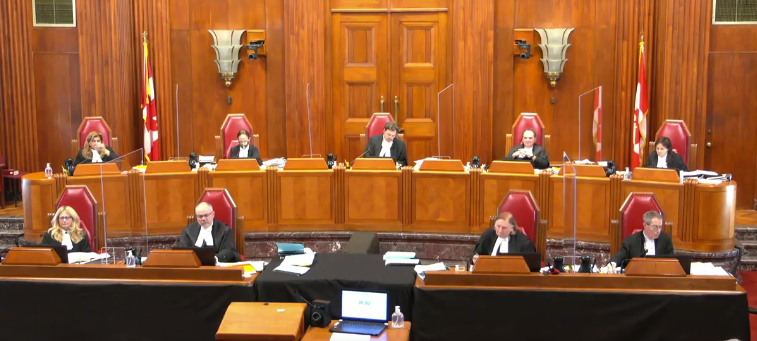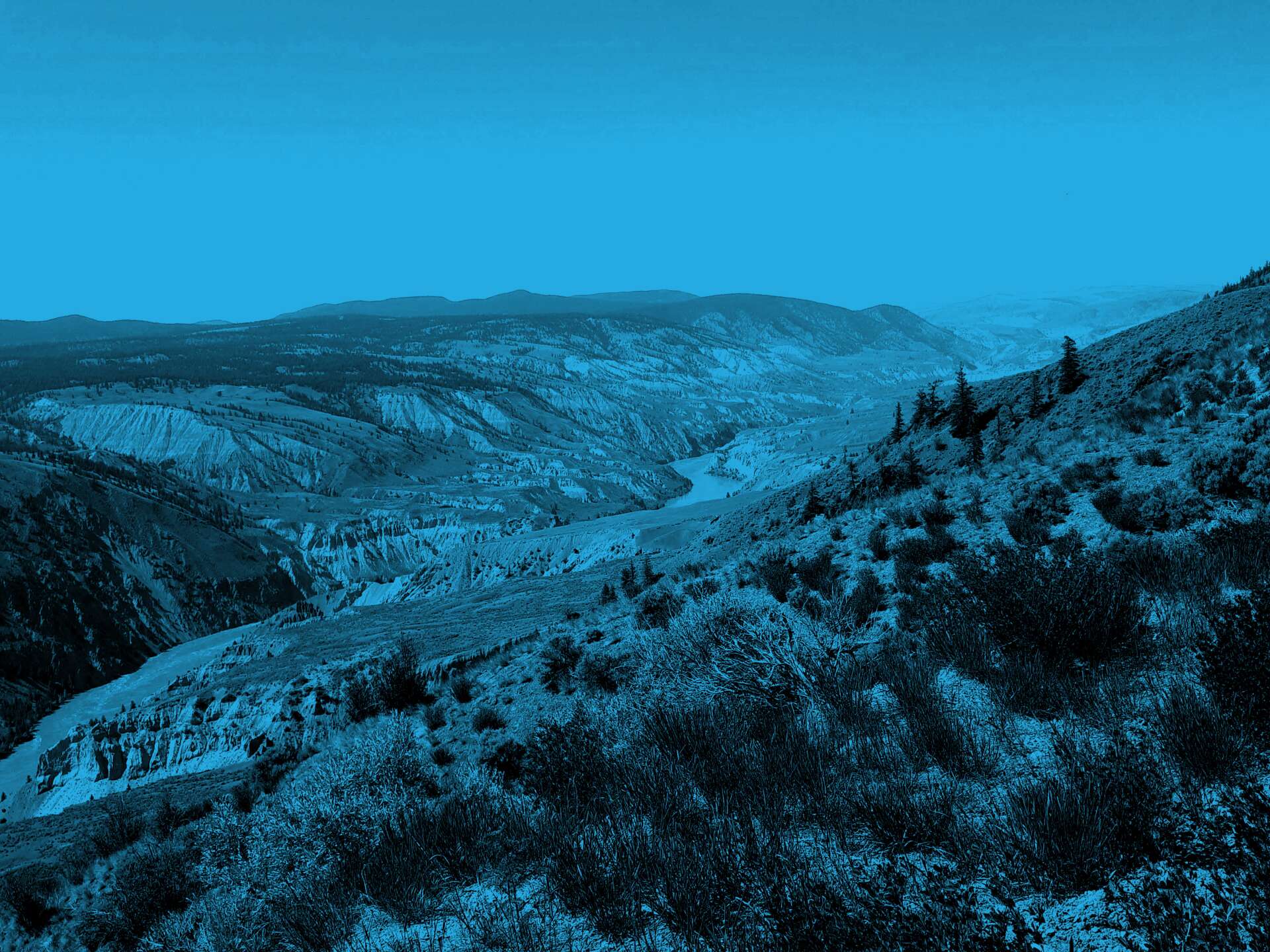Earlier this month my colleague Kate Gunn and I had the honour of representing the Indigenous Bar Association on their intervention in the Desautel appeal at the Supreme Court of Canada.
As we explained in earlier posts Decolonizing the International Border and Righting the Wrongs of Colonization, Desautel raises the question of whether Indigenous people whose ancestral lands are located in Canada but who are not Canadian citizens can exercise Aboriginal rights protected under s. 35 of the Constitution Act, 1982.
Below are the speaking notes that formed the basis for my oral submissions at the Supreme Court. Because of the significance of the issues in the case, there were numerous intervenors from across Canada, and as such our submissions were limited to 5 minutes. I’ve also included, in italics, contextual comments that further explain the issues. Our written submissions can be found here. The full hearing can be viewed here. My submissions are excerpted in the following video:
Thank you to the Indigenous Bar Association for the privilege of making these submissions on behalf of Indigenous lawyers, law students, scholars and judges.
Oral Submissions of the IBA:
The Question Before You Today
During oral submissions British Columbia and Crown intervenors framed the question before the Court as whether a foreign, U.S. based Aboriginal group can assert s. 35 rights in Canada. My submissions sought to clarify that the courts below had specifically avoided making any determination on the extent or exact location of the rights-holding group of which Mr. Desautel is a member.
Justices, it is important to clear away the smoke and concentrate on the issue raised by the specific facts of this case.
The salient facts are that Sinixt territory predates and spans the Canada-US border and that the Sinixt are not wholly located in the United States--they live on both sides of the border.
Because this case arose as a defence to regulatory charges, the lower courts were not required to, and based on the evidence before them, could not delineate the precise extent of the Sinixt rights holding collective (para. 49 of the Court of Appeal’s decision).
Consequently, the issue today is not whether a rights holding collective based in the United States can exercise s. 35 rights in Canada.
The issue is whether a person of Indigenous ancestry, who is a resident of the United States, is entitled to exercise an aboriginal right in their people’s ancestral territory in Canada.
The IBA submits that when the central issue in this case is kept in focus, many of the arguments and fears raised by the appellant and Crown intervenors about US groups located in the United States dissipate.
Furthermore, because this matter has arisen as a defence to regulatory charges, the Court should be particularly cautious of arguments that go beyond the facts and issues raised.
This Court has identified the challenges that arise when collective rights protected by s. 35 are litigated by way of summary conviction proceedings (para. 142 of Marshall & Bernard).
We are here today with this imperfect proceeding and incomplete facts because of the Crown's persistent policy of denying Indigenous rights.
Indigenous people across the country are regularly forced into court to defend their rights. Too often, the Crown responds to their claims with arguments which would, if accepted, narrow and defeat the promise of s. 35.
So-Called Practical Challenges
Aboriginal law cases at the Supreme Court precipitate a never-ending procession of ‘flood-gate’ arguments, i.e. if the Court agrees with the Indigenous parties the flood-gates will open, confusion will reign and impractical, unworkable scenarios will sprout like weeds across the country. Our submissions below were intended to address, at a high-level, the flood-gates arguments raised by BC and Crown intervenors that in this case, it would be unworkable for the Court to recognize that the Crown may owe constitutional obligations to Indigenous Peoples who do not reside in Canada.
Decolonization is a messy business--that’s why it is a road, not a moment in time.
The assertion of Crown sovereignty, rooted in the discredited Doctrine of Discovery, puts the heavy burden of reconciliation on the Crown.
Instead of shouldering this responsibility, the Appellant and Crown intervenors rely on the insidious effects of the imposition of the international boundary--the ultimate expression of colonization--to argue that they should not now be burdened with the difficulties of reconciliation.
This Court should soundly reject these arguments just as in Delgamuukw and Van der Peet it rejected earlier arguments that an unbroken chain of continuity is required to prove Aborignal title and rights because doing so would undermine the very purpose of s. 35 (see Delgamuukw at para. 153).
What this Case is About
Sometimes a case presents the Court with a stark choice--move forward or step back. In this case, the choice was whether to allow the Crown to rely on the international border as a basis to deny its obligations to Indigenous Peoples with ancestral lands in Canada. In summing up, I attempted to make the choice, and the consequences of choosing one option over the other, as clear as possible.
The grand purpose of s. 35 is to ensure the distinctive Indigenous peoples that pre-dated colonization and the creation of the Canadian state are protected and perpetuated into the future.
Distinctive Indigenous peoples, including the Sinixt, continue to exist along the border despite the bifurcation of their territory by the international boundary and despite the devastating effect colonization has had on their lands, languages, cultures, political systems and families--they have survived.
S. 35 was intended as a bulwark against the ultimate success of colonization.
On behalf of Indigenous lawyers, law students, scholars and judges across Canada, I urge this court to uphold the promise of s. 35 and not to become the instrument of completing Canada’s colonization project.

Bruce McIvor, lawyer and historian, is principal of First Peoples Law Corporation. He is also an Adjunct Professor at the University of British Columbia’s Allard School of Law where he teaches the constitutional law of Aboriginal and Treaty rights. Bruce is a proud Métis from the Red River in Manitoba. He holds a Ph.D. in Aboriginal and environmental history and is a Fulbright Scholar. A member of the bar in British Columbia and Ontario, Bruce is recognized nationally and internationally as a leading practitioner of Aboriginal law in Canada.
Follow Bruce on LinkedIn and Twitter
Kate Gunn is a lawyer at First Peoples Law Corporation. Kate completed her Master's of Law at the University of British Columbia. Her most recent academic essay, "Agreeing to Share: Treaty 3, History & the Courts," was published in the UBC Law Review.
Follow Kate on LinkedIn and Twitter
For more First Peoples Law analysis, visit our blog
Sign up for our Aboriginal Law Report
